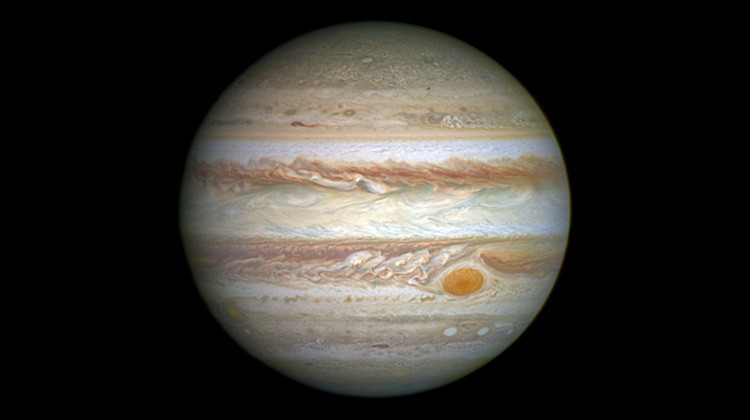Moon, Jupiter and Saturn
Update: 2020-07-31
Description
The weather doesn’t look great this weekend, but if we’re lucky enough to have clear or clear-ish skies, look the southeast after sundown… so around 9:30 .
You’ll see that the moon dominates the evening sky this weekend. It’s a waxing gibbous moon, which means it’s on its way to being a full moon, which happens Monday.
When you look at the moon tonight, you’ll notice a bright point of light nearby. That’s Jupiter.
On Friday night, Jupiter will be below and to the left of the moon. Saturday, the moon sits between Jupiter and Saturn, which will look like a dim yellow star to the left of the moon. Sunday, the moon moves past both planets and closer to the horizon in the evening.
All three of these targets are great for observing with a telescope. Just about any telescope will allow you to point out certain features on the moon… and because there’s still a bit of a shadow covering part of the moon, you might notice really fine details on craters and mountains.
And speaking of moons… scan over to Jupiter with your telescope to see the four Galilean moons that orbit the giant planet.
They’re called Galilean moons because when 17th Century astronomer Galileo Galilei first observed Jupiter with his telescope, he noticed what he first thought were stationary stars. But when some would disappear in front of, or behind the planet, he concluded that they were orbiting Jupiter.
Ganymede, Io, Callisto, and Europa are the largest of Jupiter’s nearly 70 natural satellites. And you can see them this weekend… even with just a toy telescope.
And of course, seeing the rings of Saturn from your backyard is enough to hook anyone on astronomy. (Most telescopes, including that old one of yours will give you a pretty good look at that too.)
You’ll see that the moon dominates the evening sky this weekend. It’s a waxing gibbous moon, which means it’s on its way to being a full moon, which happens Monday.
When you look at the moon tonight, you’ll notice a bright point of light nearby. That’s Jupiter.
On Friday night, Jupiter will be below and to the left of the moon. Saturday, the moon sits between Jupiter and Saturn, which will look like a dim yellow star to the left of the moon. Sunday, the moon moves past both planets and closer to the horizon in the evening.
All three of these targets are great for observing with a telescope. Just about any telescope will allow you to point out certain features on the moon… and because there’s still a bit of a shadow covering part of the moon, you might notice really fine details on craters and mountains.
And speaking of moons… scan over to Jupiter with your telescope to see the four Galilean moons that orbit the giant planet.
They’re called Galilean moons because when 17th Century astronomer Galileo Galilei first observed Jupiter with his telescope, he noticed what he first thought were stationary stars. But when some would disappear in front of, or behind the planet, he concluded that they were orbiting Jupiter.
Ganymede, Io, Callisto, and Europa are the largest of Jupiter’s nearly 70 natural satellites. And you can see them this weekend… even with just a toy telescope.
And of course, seeing the rings of Saturn from your backyard is enough to hook anyone on astronomy. (Most telescopes, including that old one of yours will give you a pretty good look at that too.)
Comments
Top Podcasts
The Best New Comedy Podcast Right Now – June 2024The Best News Podcast Right Now – June 2024The Best New Business Podcast Right Now – June 2024The Best New Sports Podcast Right Now – June 2024The Best New True Crime Podcast Right Now – June 2024The Best New Joe Rogan Experience Podcast Right Now – June 20The Best New Dan Bongino Show Podcast Right Now – June 20The Best New Mark Levin Podcast – June 2024
In Channel














